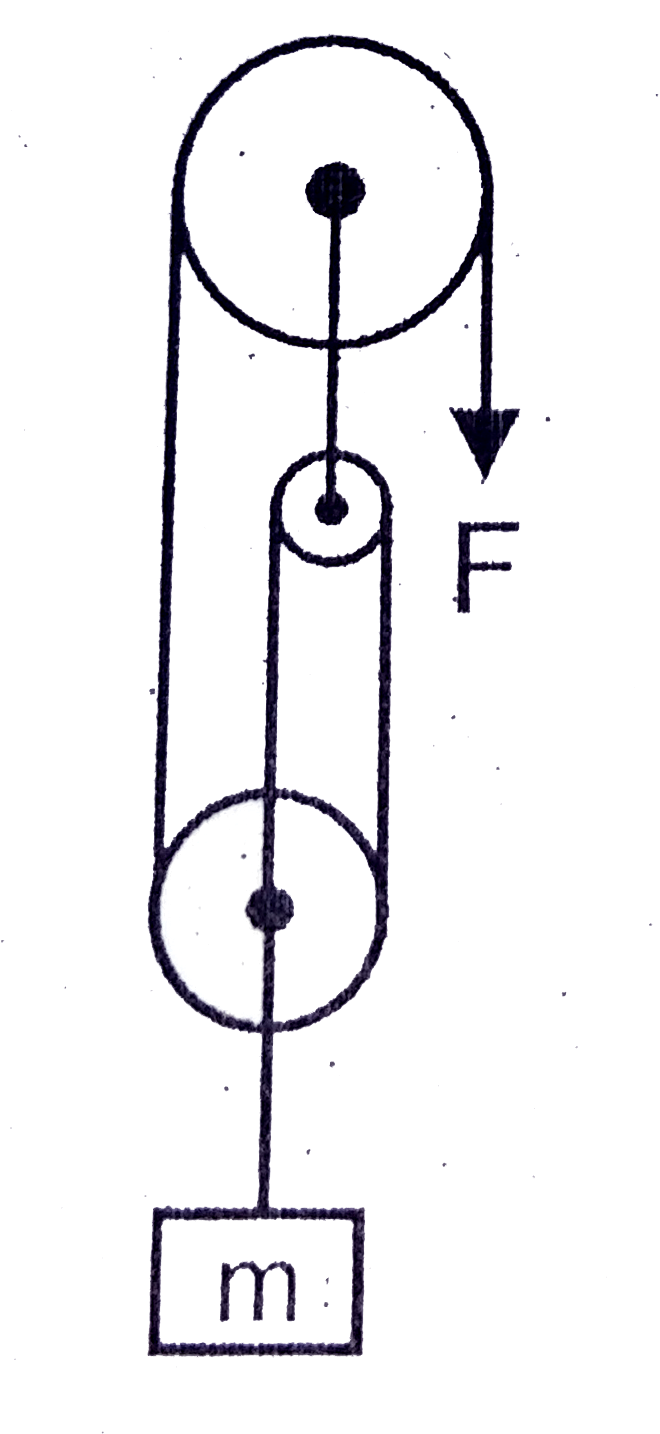Block B shown in figure , moves downwards with a constant velocity of 20cm/s. At t = 0, block A is moving upward with a constant acceleration, and its velocity is 3cm/s. If at t=3s blocks C has moved 27 cm to the right, determine the velocity of block C at t = 0 and the acceleration of A and C.

The correct Answer is:[aA=20cm/s2↑⏐;aC=60cm/s2→;vC=71cm/sec←]
Step by step video, text & image solution for Block B shown in figure , moves downwards with a constant velocity of 20 cm//s. At t = 0, block A is moving upward with a constant acceleration, and its velocity is 3cm//s. If at t = 3s blocks C has moved 27 cm to the right, determine the velocity of block C at t = 0 and the acceleration of A and C. by Physics experts to help you in doubts & scoring excellent marks in Class 11 exams.
Updated on:21/07/2023Topper's Solved these Questions
- KINEMATICSBOOK - PHYSICS GALAXY - ASHISH ARORACHAPTER - KINEMATICSEXERCISE - Discussion Question
18 Videos
- KINEMATICSBOOK - PHYSICS GALAXY - ASHISH ARORACHAPTER - KINEMATICSEXERCISE - Conceptual MCQs Single Option Correct
35 Videos
- KINEMATICSBOOK - PHYSICS GALAXY - ASHISH ARORACHAPTER - KINEMATICSEXERCISE - Unsolved Numerical Pro.
83 Videos
- GRAVITATIONBOOK - PHYSICS GALAXY - ASHISH ARORACHAPTER - GRAVITATIONEXERCISE - Unsolved Numerical
94 Videos
- LINEAR MOMENTUM & ITS CONSERVATIONBOOK - PHYSICS GALAXY - ASHISH ARORACHAPTER - LINEAR MOMENTUM & ITS CONSERVATIONEXERCISE - exercise 1.3
3 Videos
Similar Questions
Figure shows three blocks A, B and C connected by a cable and system of pulleys. The blocks is pulled downward with a constant velocity of 7.5cm/s. At t = 0 , block, A starts moving downward from rest with a constant acceleration. It is given that the velocity of block A after travelling 20 cm is 30cm/s, find the change in position, velocity and the acceleration of block C at this instant.

View SolutionAt t = 0, block B in figure starts moving with a velocity 15 cm/s and with a constant acceleration. It is observed that after blocks travels 24 cm to the right its velocity is 6cm/s. Find:
(a) The accelerations of A and B,
(b) The acceleration of point M of the string.
View Solution
Knowledge Check
Knowing that block B starts to move downward with a constant velocity of 18cm/sec, the velocity of block A will be:
 A27 cm/sB12 cm/sC36 cm/sD9 cm/s
A27 cm/sB12 cm/sC36 cm/sD9 cm/sIn the block moves up with constant velocity v m//s. Find F
 AF=mg2BF=2mg3CF=mg3DF=m3
AF=mg2BF=2mg3CF=mg3DF=m3
Blocks shown in figure moves with constant velocity 20 m/s towards right. All surfaces in contact are rough. The friction force applied by B on A is

View Solution
Blocks shown in figure moves with constant velocity 10 m/s towards right. All surgaces in contact are rough. The friction force applied by B on A is :-
View SolutionThe block A is moving downward with constant velocity v0. Find the velocity of the block B. When the string makes an angle θ with the horizontal

View SolutionBlock C shown in figure, starts from rest and moves downward with a constant acceleration. Knowing that after 12s the velocity of block A 7.2 m/s, determine the acceleration of A, B and C and the velocity and the displacement of block B after 8s.

View SolutionIn the arrangement shown in the figure, the block C begins to move down at a constant speed of 7.5cm/s at time t=0. At the same instant block A is made to start moving down at constant acceleration. It starts at M and its speed is 30cm/s when it reaches N(MN=20cm). Assuming that B started from rest, find its position, velocity and acceleration when block A reaches N.

View SolutionIn figure block A starts from rest and moves upward with a constant acceleration. After 8 s the relative velocity of block B with respect to A is 0.6 m/s. Find the accelerations of blocks A and B. Also find the velocity of block B after 6 s.

View Solution
